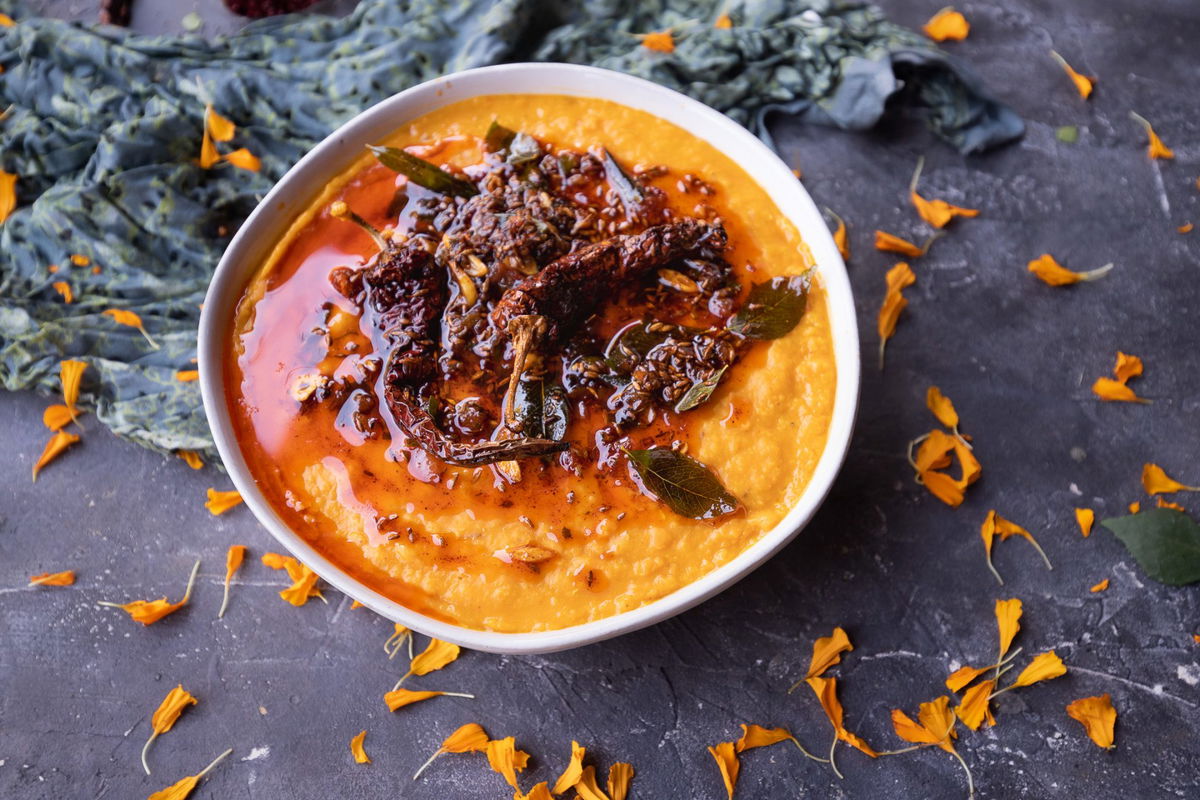This sprouted moong sauté, or “ugadela mug”, is a simple, nutritious dish enhanced with garlic, cumin, and turmeric. This is a great dish you must try if you are looking for something to make with sprouted moong.
How to Cook Mung Bean Sprouts
Cooking moong bean sprouts is very simple. Most of the work of cooking this dish is about making sure the onions and garlic are not raw. Beyond that, the sauté time of the dish is kept short because we want to retain some of the natural crunch of the moong beans. Cooking them with the onions and garlic works to integrating the flavors and spices and warming them for a nice serving temperature.
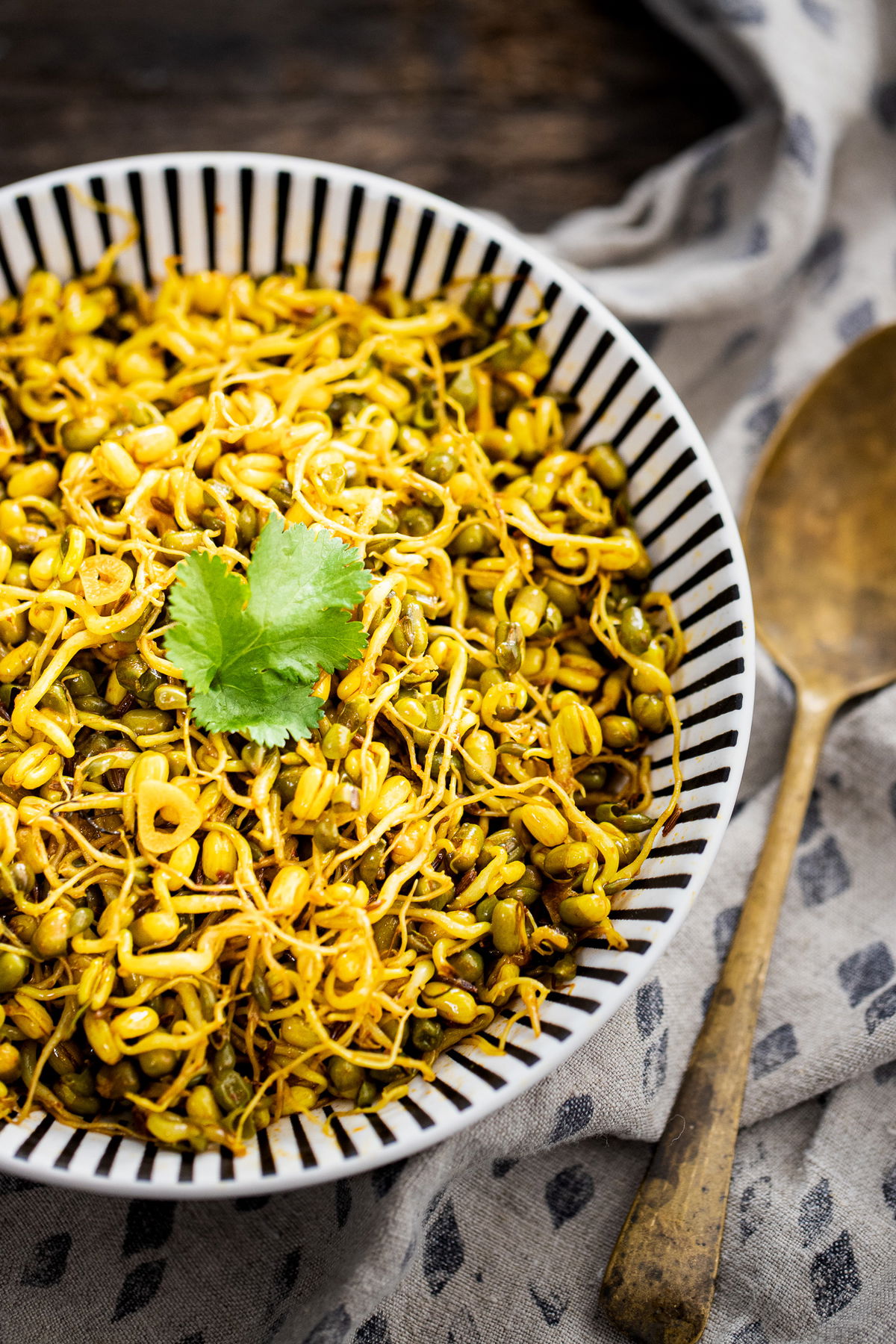
This sauté was something my mom used to make for me at least once a week while I was growing up. It was her way of adding protein to our meals. We always had bean sprouts around, and moong beans were by far the most common. It was mom’s evening routine to: 1. boil the milk for yogurt, 2. soak rice and dal for dhokra, and 3. sprout a bean.
For my family, this dish was a quick side that mom threw together frequently to make sure that we had some protein in our vegetarian diet.
Ingredients
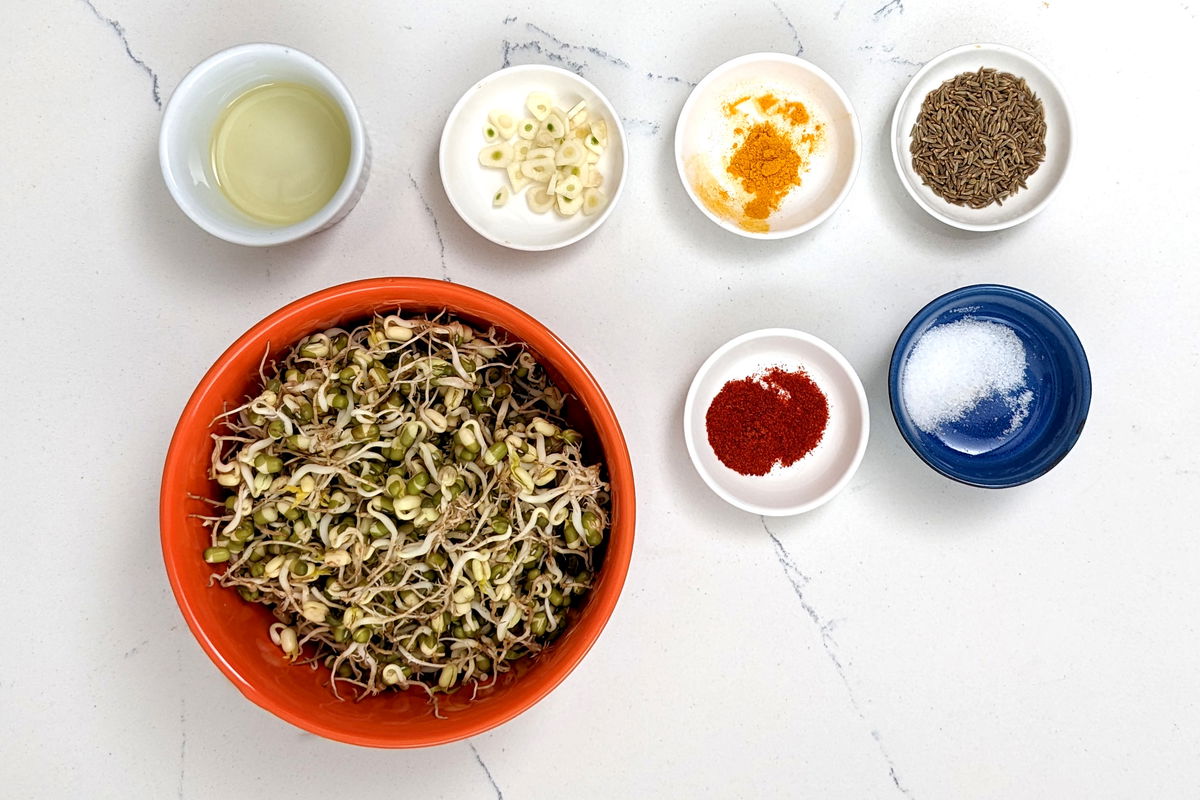
Variations
Since this is a simple sauté, you can easily experiment with different flavors for different ways to enjoy the dish. For example, try using ginger instead of garlic. Or mix up your flavor profile: use cumin, use mustard seeds, or even thyme for something completely different. It might even be nice with a rosemary-garlic mix.
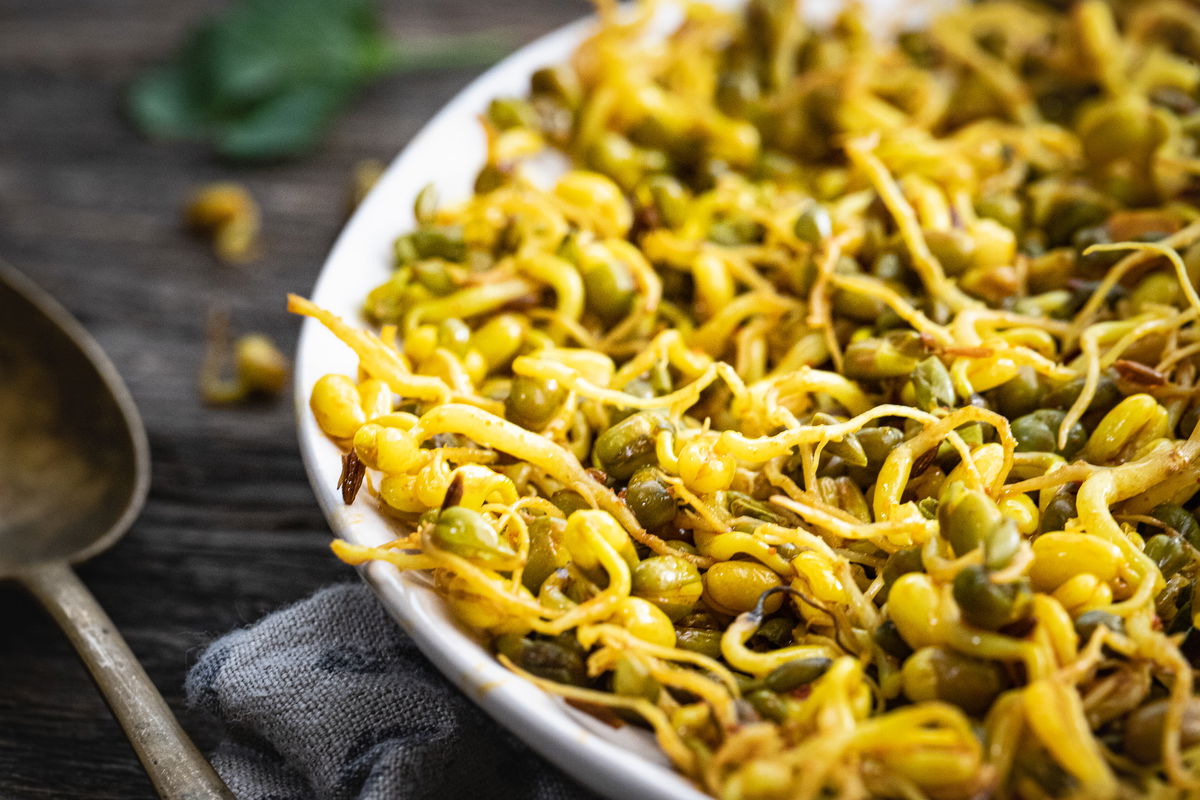
Thali
A Gujarati plate of food is called a “thali.” It includes vegetables, rice, dal, beans, roti, raita, and something sweet. For the bean, or kathor, my mom preferred to prepare a sprouted bean. Sprouting beans makes the nutrients easier to digest and, therefore, more nutritious.
If you are serving this sauté as part of a meal, consider serving it with other foods that might appear in a thali. It goes well with a good vegetable shaak, tindora nu shaak, dudhi chana nu shaak. Serve it with a dal, such as tuvar dal or sprouted moong dal. And provide some basmati rice and roti.
Refrigerating
Will keep in refrigerator for a couple of days. Tastes great cold, you can add it to salads even. Or reheat on a pan with 1-2 tablespoons of water. Would not recommend.
Recipe
Simple Mung Bean Sprout Saute
A simple, nutritious dish enhanced with garlic, cumin, and turmeric
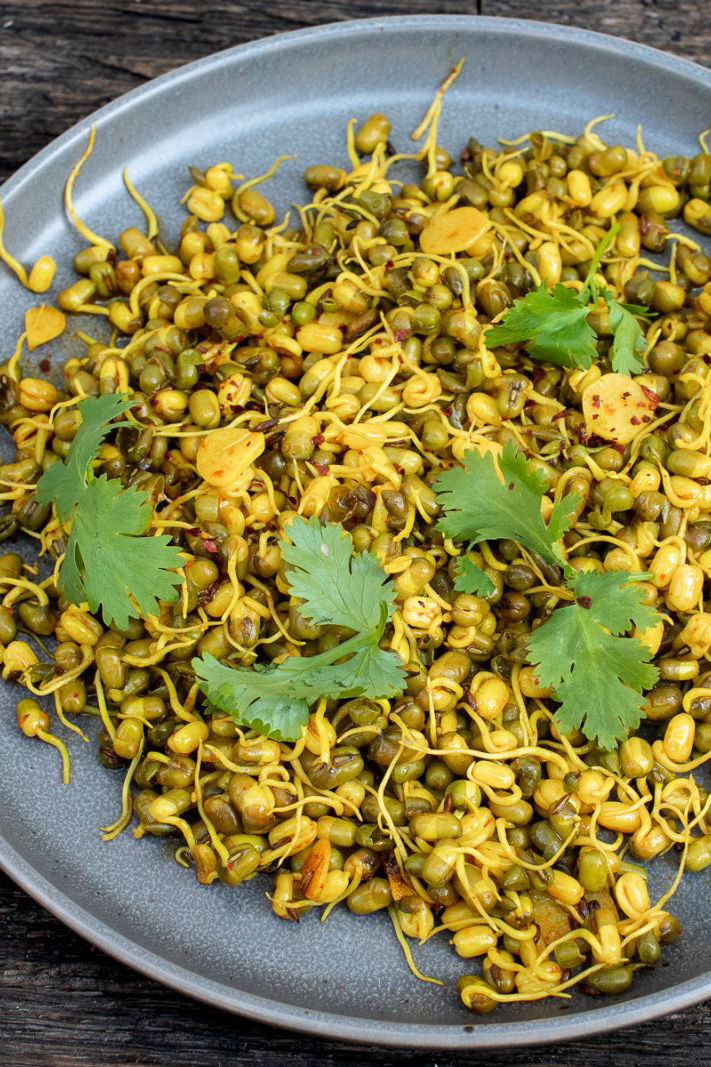
Ingredients
- 1 cup moong bean sprouts
- 1 tsp whole cumin seeds
- 1 tsp vegetable oil
- 2 cloves garlic
- 1/2 tsp chili powder
- 1/4 tsp turmeric (optional)
- salt (to taste)
Instructions
- Heat the oil until it shimmers. Add cumin seeds, and let them sizzle for 10 seconds.
- Add the garlic and turmeric. Stir.
- When the garlic is slightly golden, add the moong beans and a splash of water. Sauté for about a minute.
Notes:
For a softer, less crunchy saute, add a couple of tablespoons of water, cover and let cook about 5 minutes. I would encourage you to throw in anything else you might want in this dish. Add some onions with the garlic if you want, some chilies or maybe some ginger, it's a very flexible dish. In the pictures we topped the beans with spring onions and a little parsley. Why not? Cilantro would be great in this too!
